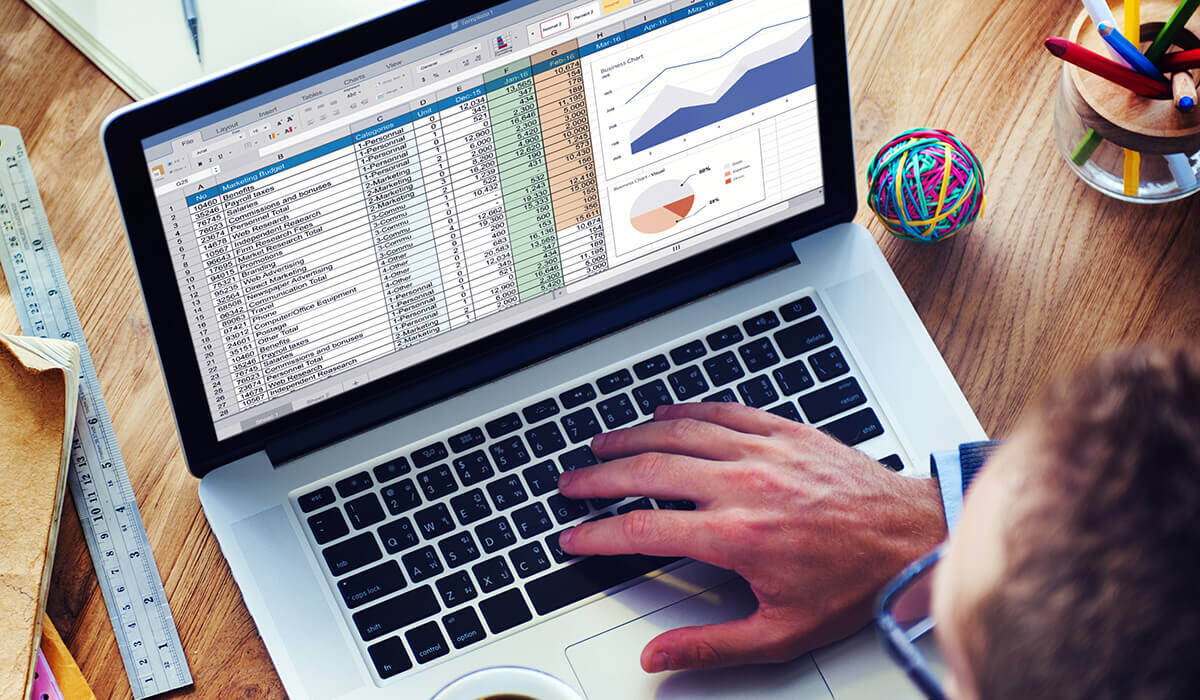

Posted on 06th November 2024
20 Ways to Use POS Data to Boost Profits
In the competitive world of hospitality, leveraging Point of Sale (POS) data is crucial for optimising operations, maximising profits, and enhancing customer satisfaction.
Whether you manage a restaurant, café, bar, pub, multi-site or franchise, harnessing insights from your POS system can lead to significant improvements. Here’s how using your POS data effectively can help your hospitality business thrive, with real-life examples demonstrating each strategy.
- Identifying Best-Selling Items
How It Helps: Understanding which items are most popular allows you to promote high-margin products, improve menu design, and increase overall sales.
How to Do It: Use your POS system’s sales reports to analyse item performance. Identify which products generate the most revenue and focus marketing efforts on these items. Regularly review and update your menu based on these insights.
Example: A popular café discovered their avocado toast was a top seller through their POS system insights. By featuring it more prominently on their menu and social media, they increased sales by 15%. - Tracking Seasonal Trends
How It Helps: Analysing seasonal trends helps in adjusting menu items and promotions to match customer preferences throughout the year.
How to Do It: Review historical sales data from your POS system to identify seasonal patterns. Adjust your menu and promotions to align with these trends, and consider offering seasonal specials to capitalise on increased demand.
Example: A beachfront restaurant noticed that ice cream cake sales spiked in summer. By expanding their ice cream cake menu and adding seasonal varieties, they saw a 20% increase in summer sales. - Optimising Inventory Management
How It Helps: Efficient inventory management reduces waste, lowers costs, and ensures that popular items are always in stock.
How to Do It: Track inventory levels and sales patterns using your POS system. Set up automated alerts for low stock and adjust orders based on sales forecasts to maintain optimal inventory levels and reduce waste.
Example: A bistro used Point of Sale data to manage wine inventory, preventing overstocking and saving $500 monthly.
LEARN MORE: Know your business better with Insights Reporting and Analytics - Improve Pricing Strategies
How It Helps: Adjusting pricing based on POS data can improve profitability without compromising customer satisfaction.
How to Do It: Analyse sales data to determine the impact of different pricing strategies. Test price adjustments on select items and monitor sales performance. Use this data to implement pricing changes that maximise revenue.
Example: A pizzeria found that a $1 increase in the price of margherita pizza did not affect sales negatively, adding $1,000 to their revenue. - Analyse Customer Preferences
How It Helps: Tailoring your offerings based on customer preferences boosts satisfaction and drives repeat business.
How to Do It: Use customer purchase data and feedback from your POS system to identify popular items and preferences. Adapt your menu to include more of the favoured options and cater to emerging trends.
Example: A hotel restaurant discovered high demand for vegan options and expanded their menu, increasing revenue by 10%. - Personalise Marketing Campaigns
How It Helps: Targeted marketing strategies based on customer data improve engagement and loyalty.
How to Do It: Segment your customer database based on purchase history and preferences. Create targeted marketing campaigns, such as personalised discounts or loyalty rewards, and track their effectiveness using your POS system.
Example: A pub used POS data to send personalised offers, such as half price desserts when purchasing higher priced mains to regular customers, increasing repeat business by 25%. - Improve Staff Scheduling
How It Helps: Optimised scheduling ensures you have the right number of staff during busy periods and saves on unnecessary labor costs.
How to Do It: Analyse POS data to determine peak business hours and busy periods. Adjust staff schedules to ensure adequate coverage during high-demand times and reduce labor costs during slower periods.
Example: A coffee shop adjusted staff schedules according to peak times identified from POS data, reducing labor costs by 15%.
READ NEXT: CASE STUDY: Liverpool Stores & Triniteq Bring Disney Project to Life - Evaluate the Effectiveness of Promotions and Offers
How It Helps: Monitoring promotion effectiveness allows you to adjust strategies to maximise their impact.
How to Do It: Track the performance of promotions and special offers using your POS system. Compare sales data before, during, and after the promotion to assess its impact and adjust future promotions accordingly.
Example: A bar extended their happy hour by an hour based on POS data, which led to a 30% increase in sales. - Reduce Food Waste
How It Helps: Accurate data helps in planning inventory and reducing food waste, leading to cost savings.
How to Do It: Use sales data from your POS system to predict demand more accurately. Adjust production quantities and timing to minimise excess and reduce food waste, improving overall profitability.
Example: A Canberra bakery adjusted their production schedule based on POS data, cutting waste by 40% and saving $200 weekly. - Boost Customer Loyalty
How It Helps: Loyalty programs driven by POS data foster repeat business and increase customer retention.
How to Do It: Integrate a loyalty program with your POS system to track customer visits and rewards. Offer incentives such as discounts or free items for repeat customers and monitor program success through your POS data.
Example: A restaurant implemented a loyalty program tracked through their POS system, increasing repeat customers and average spend by 20%. - Improve Menu Design
How It Helps: Regularly updating your menu based on sales data keeps it fresh and aligned with customer preferences.
How to Do It: Analyse POS data to identify low-performing menu items. Remove or replace these items and use customer feedback and sales data to develop new offerings that appeal to your target audience.
Example: A steakhouse used POS data to remove unpopular items and introduce new dishes, increasing overall menu profitability by 15%. - Track Average Transaction Value
How It Helps: Monitoring transaction values helps in identifying opportunities for upselling and increasing revenue.
How to Do It: Monitor average transaction values using your POS system’s reporting features. Identify opportunities for upselling or cross-selling and train staff to encourage higher-value purchases.
Example: A Gold Coast restaurant introduced upselling techniques based on POS data, boosting their average transaction value by 10%. - Forecast Demand
How It Helps: Accurate demand forecasting ensures optimal stock levels and reduces the risk of overproduction or stockouts.
How to Do It: Use POS data to analyse past sales trends and forecast future demand. Adjust inventory and production plans based on these forecasts to ensure you meet customer demand without overstocking.
Example: A Tasmania brewery used historical sales data to forecast demand for seasonal brews, increasing sales by 25%. - Evaluate Supplier Performance
How It Helps: Evaluating supplier performance helps in making informed decisions about suppliers, ensuring better quality and cost-efficiency.
How to Do It: Analyse data on product quality, delivery times, and pricing from your inventory POS system. Compare supplier performance and make informed decisions about which suppliers to use based on their reliability and cost-effectiveness.
Example: A fast-food chain tracked supplier performance through POS data and switched to a more reliable supplier, improving product consistency and boosting sales by 10%.
LEARN MORE: How to Use Your POS System for Better Inventory Management - Identify Underperforming Items
How It Helps: Identifying and addressing underperforming items ensures your menu remains appealing and profitable.
How to Do It: Review POS reports to identify items with low sales or negative margins. Consider removing or revamping these items to focus on more profitable and popular options.
Example: A sushi restaurant identified and removed underperforming menu items using POS data, increasing overall sales by 20%. - Optimise Table Turnover
How It Helps: Efficient table management allows you to serve more customers and increase revenue during peak times.
How to Do It: Analyse table turnover rates and peak times using your POS system. Adjust seating arrangements and manage reservations to maximise table usage during busy periods.
Example: A restaurant reconfigured their seating plan based on POS data, improving table turnover and boosting revenue by 15%. - Monitor Employee Performance
How It Helps: Monitoring employee performance helps in identifying and addressing training needs and motivating staff.
How to Do It: Analyse table turnover rates and peak times using your POS system. Adjust seating arrangements and manage reservations to maximise table usage during busy periods.
Example: A bar tracked sales by employee and rewarded top performers, improving staff morale and productivity. - Enhance Customer Experience
How It Helps: Enhancing the customer experience based on feedback and data leads to higher satisfaction and repeat visits.
How to Do It: Collect and analyse customer feedback alongside POS data to identify areas for improvement. Implement changes to enhance the overall customer experience and track the impact on customer satisfaction.
Example: A café used customer feedback and POS data to make improvements, leading to more positive reviews and increased foot traffic. - Implement Dynamic Pricing
How It Helps: Dynamic pricing strategies help maximise revenue during high-demand periods while attracting more customers during slower times.
How to Do It: Use POS data to adjust pricing based on demand fluctuations. Implement dynamic pricing strategies to maximise revenue during busy periods while offering competitive pricing during slower times.
Example: A restaurant introduced dynamic pricing based on demand, increasing overall revenue by 10% during peak times. - Analyse Competitor Performance
How It Helps: Understanding your position relative to competitors helps in making strategic decisions to enhance your market position.
How to Do It: Use POS data to compare your performance against industry standards and competitors. Identify areas for improvement and make strategic changes to stay competitive and enhance market position.
Example: A fast food chain compared their sales data with industry benchmarks and made strategic adjustments, such as new menu items, to stay competitive.
Affordable Integration with PowerEPOS Insights
Adding a robust reporting and analytics tool like PowerEPOS Insights to your POS system is not only beneficial but also affordable. For just $50 per site, per month (including GST), you can unlock powerful features that help you leverage POS data for strategic decisions, driving profitability and operational efficiency.
Takeaways
Using POS data effectively is key to optimising your hospitality business operations. Whether you’re managing a restaurant, café, bar, or pub, multi-site or franchise, integrating advanced POS analytics tools like PowerEPOS Insights provides actionable insights to enhance profitability. By implementing these strategies, you can make informed decisions that drive growth, improve customer satisfaction, and boost your bottom line. Embrace the power of POS data and stay ahead of the competition in the ever-evolving hospitality industry.
If you're seeking a quality, Australian-made and supported Point of Sale solution for your hospitality or retail business, look no further than Triniteq.
Our innovative technologies and high-quality service are designed to simplify operations, enhance customer experience, and make you more money.
Discover our range of products and services today.
If you're new here, watch our Demo video, or Book a demo for more info.
Related articles
5 minute read | In this Article The Business Case for Gift Cards in Hospitality Seasonal ...
September 8-11, 2025 | Sydney ICC | Stand K12, Talking Tech Section We're excited to ...
Assembly The People's Pub lives up to its name as Canberra's ultimate community gathering ...




